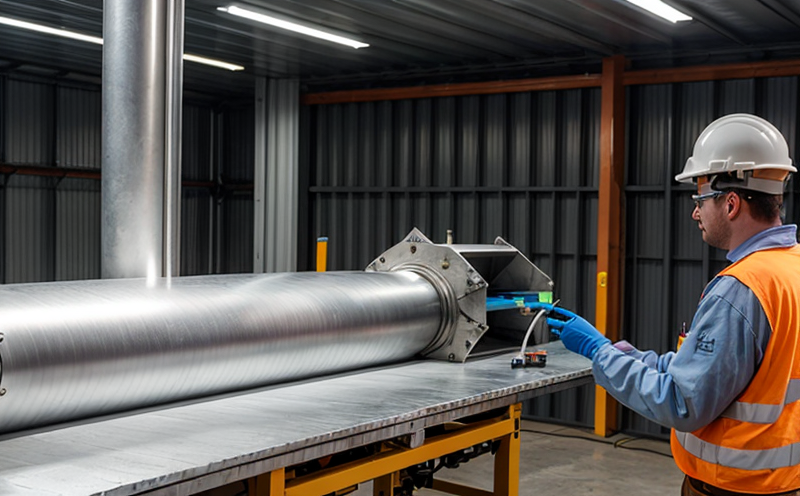UL 94 Flammability Testing of Renewable Plastics and Components
The UL 94 flammability test is a critical standard widely used in the energy sector, particularly for materials that will be exposed to high temperatures and environmental conditions. This test evaluates the ability of renewable plastics and components to resist ignition when exposed to flame and to extinguish self-sustained combustion once the source of the flame is removed.
The UL 94 standard specifies various classifications based on the rate at which a material will burn, its flaming or non-flaming characteristics, as well as the extent to which it drips. The classifications include V-0, V-1, and V-2 for vertical testing and HBF for horizontal burning flammability classification.
For renewable energy applications, UL 94 is crucial in ensuring that materials used in solar panels, wind turbines, electric vehicles, and other components are safe under various operating conditions. Renewable plastics often face unique challenges due to their composition from bio-based sources such as plant fibers or sugars, which can affect the flammability characteristics compared to conventional petroleum-based plastics.
The testing process involves preparing the specimens according to specified dimensions and then placing them in a specialized oven where they are exposed to various heat sources. The behavior of the specimen is carefully observed and recorded based on the criteria outlined in the UL 94 standard. This includes measuring the length of flaming, non-flaming, and total burning time, as well as observing any dripping or melting.
Understanding the flammability characteristics of renewable plastics and components is essential for manufacturers to ensure compliance with regulatory standards and to enhance product safety. Compliance with UL 94 can also be a selling point in the market, demonstrating that products meet industry-recognized benchmarks for quality and reliability.
| Classification | Flame Retardant Performance | Description |
|---|---|---|
| V-0 | Excellent Flame Resistance | No flaming, no dripping, and self-extinguishes within 10 seconds. |
| V-1 | Adequate Flame Resistance | No flaming or dripping, but may not extinguish within 10 seconds. |
| V-2 | Acceptable Flame Resistance | Flaming and/or dripping may occur. |
| HBF | Horizontal Burning Flammability | Tested horizontally for non-plastic materials such as textiles. |
- The V-0 classification is the most stringent and preferred in safety-critical applications like renewable energy components.
- V-1 and V-2 are less stringent classifications, often acceptable for lower-risk applications.
- Horizontal burning (HBF) testing is used to assess non-plastic materials such as textiles or rubber used in solar panel frames.
In the context of renewable energy, compliance with these standards ensures that materials can withstand harsh environmental conditions and operate safely over their intended lifetimes. This is particularly important for components exposed to high temperatures, UV radiation, and mechanical stress.
Testing services like those provided by Eurolab can help manufacturers ensure that their products meet the stringent requirements of UL 94 and other relevant standards. Our state-of-the-art facilities and experienced technicians provide accurate testing and reliable results, ensuring compliance with international standards such as ISO/IEC 17025.
Eurolab Advantages
EuroLab offers a comprehensive suite of services to support the testing needs of renewable energy materials. Our team of experts ensures that you receive accurate and timely results, which are critical for product development and compliance.
- Accreditation and Compliance: We are fully accredited by ISO/IEC 17025, ensuring the highest standards of testing.
- State-of-the-Art Facilities: Our laboratories are equipped with the latest instrumentation to perform accurate and reliable testing.
- Experienced Technicians: Our team consists of highly skilled professionals who have extensive experience in materials testing.
- Comprehensive Testing Capabilities: We offer a wide range of tests, including mechanical, thermal, and chemical property testing, among others.
EuroLab is committed to providing high-quality services that meet the needs of our clients. Our dedicated team works closely with you to understand your specific requirements and deliver tailored solutions.
Why Choose This Test
- Compliance: UL 94 testing ensures compliance with international standards, enhancing product safety and reliability.
- Safety: By identifying potential flammability issues early in the development process, you can enhance the safety of your products.
- Market Access: Meeting UL 94 requirements opens up market opportunities by demonstrating compliance with recognized standards.
- Risk Management: Testing helps mitigate risks associated with non-compliance and potential product recalls.
- Product Development: The insights gained from testing can help improve the design and performance of renewable energy materials.
EuroLab's UL 94 testing services provide a robust framework for ensuring that your products meet the highest safety standards, thereby reducing risks and enhancing trust in your brand.
Use Cases and Application Examples
| Application | Purpose of Testing | Expected Outcome |
|---|---|---|
| Solar Panel Frames | Evaluate the flammability characteristics under UV exposure. | Determine if the frame material meets V-0 or higher classification. |
| Wind Turbine Blades | Ensure that the resin matrix used does not ignite easily in high temperatures. | Confirm the blade material's ability to self-extinguish after flame exposure. |
| Battery Enclosures | Evaluate the flammability of battery enclosures under electrical stress conditions. | Determine if the enclosure can withstand ignition and self-extinguish safely. |
- Solar Panel Frames: The UL 94 test ensures that frames can withstand high UV exposure without catching fire, which is critical for long-term performance in solar installations.
- Wind Turbine Blades: Testing the resin matrix helps ensure that blades remain intact during lightning strikes or other electrical faults.
- Battery Enclosures: Ensuring safe operation of batteries by preventing potential fires is paramount, especially for electric vehicles and energy storage systems.
The UL 94 test plays a crucial role in ensuring the safety and reliability of renewable energy components. By adhering to these standards, manufacturers can enhance product performance and ensure compliance with international regulations.





